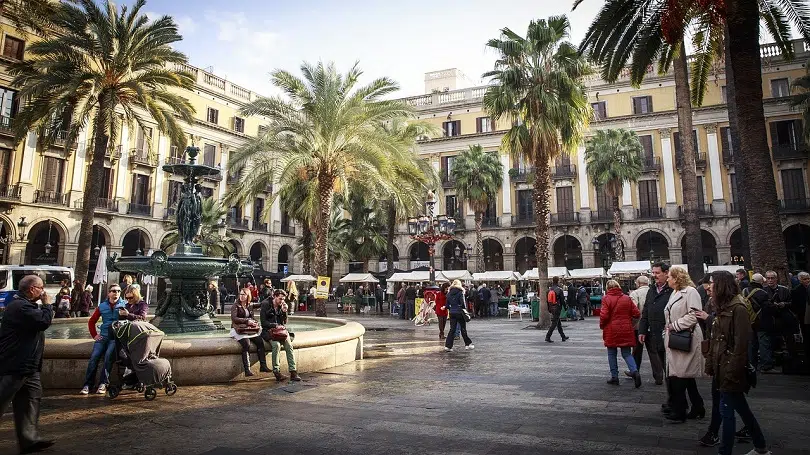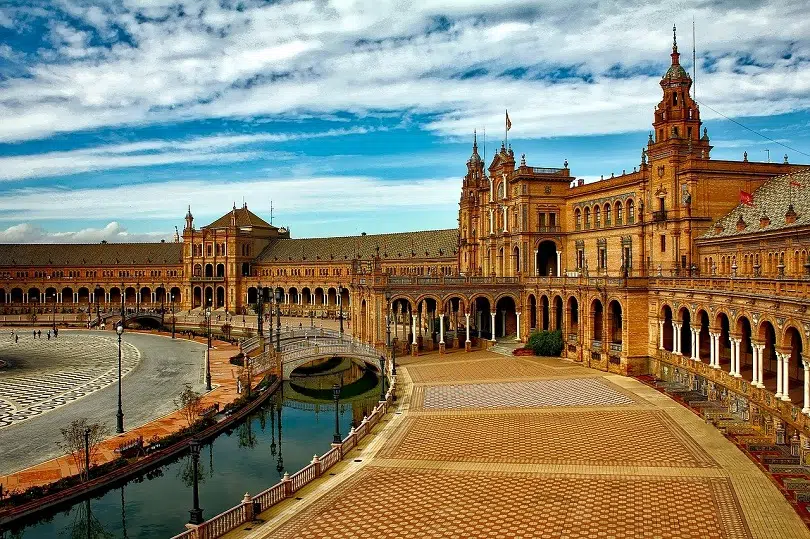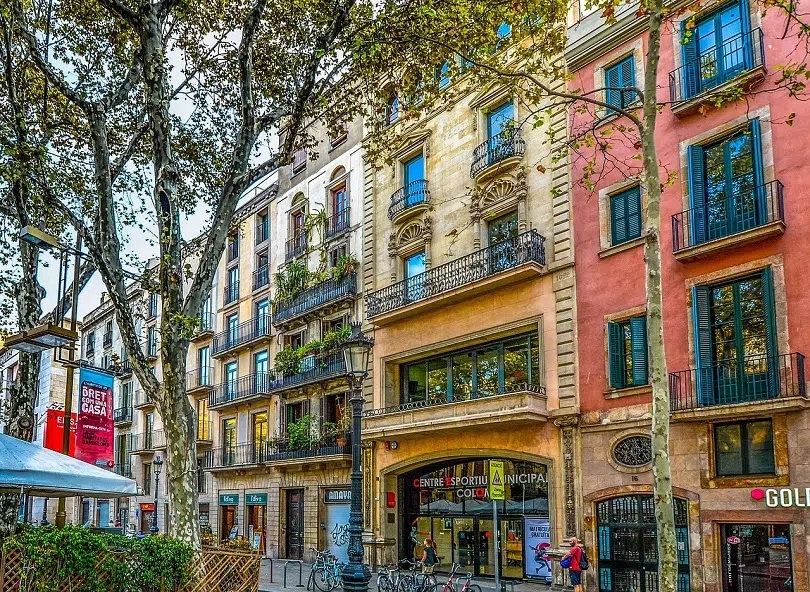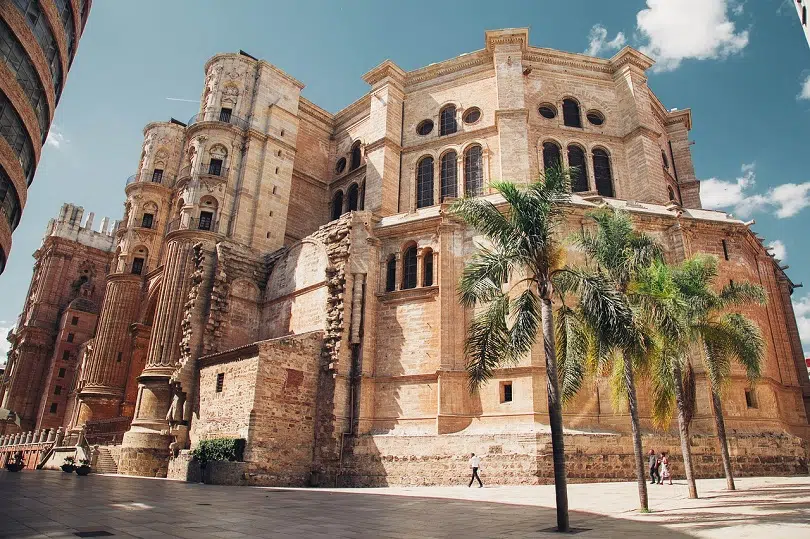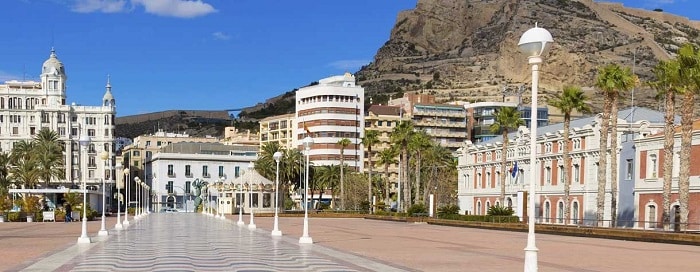For many years, European pensioners have enjoyed winter in Spain. Escaping cold places like the UK, and Germany, they find Spain cost-effective and an excellent winter bargain. As the internet encouraged independent travel, Spain also diversified itself to promote tourism during winter and add diversity to the travel market.
Indeed, holidays in Spain are no longer about summer, beaches and rooftop al fresco dining, but many people live or spend Christmas and new year there. There are many advantages to travelling during winter as well. Spain’s winter season runs from the end of December to March. So, whether you want to spend three months in Spain, or are just visiting, these tips and advice will enhance your visit
Guide to Winter in Spain
1: Benefits of Spain in Winter Versus Summer
- Warmer and mild winter weather than most European countries
- Fewer crowds at tourist attractions and restaurants
- Festive markets, winter traditions, and celebrations at Christmas
- Unique and new experiences at New Year
- Range of winter activities and places to go
- Cheaper flight tickets and hotel bookings
- Long stay options in many cities and towns of Spain
- Seasonal winter food
- January to March are the best times to shop in Spain
- Fantastic place to spend valentine’s day and surprise your loved one
2: Weather and Temperatures
Spain has several different climate zones, so research expected hours of sunshine and rain and temperatures locally rather than countrywide. Southern areas are warmer than northern, but inland destinations of Spain at higher altitudes like Granada experience colder winter temperatures. Southern regions and popular places within them during winter include…
- Andalusia – Seville, Malaga, Nerja, Marbella and Fuengirola. Aside from relaxation, Andalucía features famous golfing destinations.
- Murcia – South-Eastern Spain- This province features high profile places like Costa Calida that attracts international ex-pats and home buyers.
- Valencia – Alicante, Javea, and Benidorm. Like its counterpart, Andalusia, Valencia’s ideal year-round weather makes the region an excellent destination for winter tourism and ex-pats residing in Spain all year round.
- Catalonia features the famous Barcelona and Costa Brava, covering the north-eastern coastline. The region also earns international fame for local traditions and food.
Northern regions with colder temperatures include Galicia, Basque Country, Asturias and Costa Verde, Cantabria and Santander in the Bay of Biscay, Castile, and Leon, Spain’s largest region.
3: What to Wear and Pack in Winter
Where ever you go in Spain in winter, night-time temperatures drop, so pack warm jackets and scarfs. Additionally, ditch beachwear, towels, and sunscreen unless you head to the mild Canary Islands or choose hotels with indoor pools. We wear jeans that make for comfortable exploration and twin well with shirts and sweaters to look smart but casual. Suitable footwear like boots or trainers helps us be active and keep warm at the same time.
4: Winter Food and Drink in Spain
Churros: This delightful deep-fried dough has made international fame in recent years, but there is nothing better than traditional Spanish versions, especially when served straight from the fryer.
Cocido Madrileno: Stemming from Madrid, this filling chickpea, potato, cabbage pork, beef, and chicken dish is full of warmth during winter. This family-friendly staple dish is also served in many restaurants.
Fabada Asturiana: This rich bean stew, often shortened to Fabada, stems from Asturias but found its way to other parts of Spain. The main ingredients are white beans, Chorizo, and pork belly.
Spanish Omelette: Made with eggs and potatoes and sometimes with other ingredients like onion, this dish is perfect for snack and evening meals. Delicious served straight away, some bars in Spain offer the snack as tapas.
Catalan-style Cannelloni: Stemming from Barcelona, this dish is rectangular pasta sheets filled with meat, fish, or vegetables, rolled up and covered with béchamel sauce and grated cheese. Think of this dish as Spain’s version of Italian cannelloni.
Cod and Cauliflower: Called bacalao con coliflor in Spanish, this northern dish is simply delicious yet simple. This time-honoured recipe with added touches of garlic and paprika promote Spain’s seafood winter cuisine.
Seasonal Ingredients: Olive harvests occur in southern Spain in December and January. Try escarole lettuce that comes into season from November to February. Throughout winter, prize Iberian pigs are slaughtered, and Spaniards love the best seasonal fish; blackspot seabream caught in Atlantic coast towns. Finally, indulge in rich and time-honoured hot chocolate or Caldo broth made from pork or chicken for drinks. As well as offering up delightful taste, broth promotes good health.
Important Winter Festival of Spain
Three Kings Festival in Spain: Kids love this 6th January winter day because they watch parades while sweets are thrown at them. Also called Epiphany, eat King’s cake pastries featuring anise, sugar, candied fruit, and toppings of whipped cream, chocolate, or custard.
Visit Christmas Markets in Spain
Most people think of Germany or Switzerland for winter Christmas fairs, yet Spain also delivers good selections. Fira de Santa Llucia in Barcelona dates to the 18th century. Find the fair in the old Gothic district, and enjoy over 200 stalls selling various gifts and Christmas delights. Plaza Mayor area in Madrid wholeheartedly embraces festive Christmas spirits with 100 booths, while Valencia decides to go big and bold with their huge winter market. Also, enjoy the funfair lasting until mid-January. Other places to enjoy Christmas fairs in Spain include Seville and Granada.
Skiing in Spain
Think again if you thought winter holidays in Spain would be all about walking, historic places, and indoor tourist museums. Although Spain cannot match France for skiing, the country is home to decent winter resorts. Enjoy the Sierra Nevada mountain peaks’ long season and visit Zaragoza in the Pyrenees mountains because the region features Panticosa and Formigal ski resorts. Still, the biggest, Aramon, holds a Pyrenees Christmas market in the Plaza del Pilar from December through to January. Do visit the capital city, Zaragoza, which screams of history.
Warmest Place in Spain During Winter
If your only reason for visiting Spain in winter is warm temperatures, head to the Canary Islands, including Gran Canaria, Fuerteventura, Lanzarote, and Tenerife. The Canary Island’s subtropical climate zone evokes warm temperatures, usually average 20 degrees in January. Additionally, rainfall in the Canary Islands is roughly 10 inches from November to December. This makes their winter climate like Spring, and people can swim and sunbathe on beaches. As a result, Tenerife and Gran Canaria are firm winter favourites of Spain for many nationalities.
Other Beautiful Places to Visit
Visit Barcelona: Spain’s second-largest city in Catalonia is popular to visit all year round. Also, in Costa Brava, winter temperatures rarely drop below 15 degrees, and daytime exploration will be fun. Barcelona offers everything winter destinations should, including cultural heritage, activities, vibrant nightlife, and shopping scenes worthy of Europe’s honour. So naturally, winter holidaymakers beat crowds in Barcelona and enjoy blue skies and warm sunshine. However, do visit the beautiful old Gothic Quarter, Sagrada Basilica site, and indulge in local cuisine through Barcelona’s excellent range of restaurants in various areas.
Explore Seville City: Beautiful Seville features fascinating cultural and European history, and despite immersing itself fully in modern living, maintained traditional Spanish vibes. At the beginning and end of winter, expect to see streetside and pavement cafes portraying European culture. Seville wholeheartedly indulges in winter cultural events and festivals but visit the prized 15th century Seville cathedral.
Malaga City: This region, another firm favourite for pensioners who live in Spain during winter, offers glorious daytime temperatures. Sitting on the great Costa del Sol region, Malaga offers beachside getaway hotspots and the promenade lifestyle, albeit temperatures are too cold to swim. Gilbralfaro Palace, Alcazaba fortress, and Picasso Museum are popular attractions in winter. Other attractions include Alameda, Larios street, Chinitas passage; Alcazabilla street, Plaza La Merced and the Old quarter.
Granada: At the foot of Spain’s Sierra Nevada Mountains, Granada gets cold in winter, but Spain’s most famous ski resort is just an hour’s drive away. Do visit Granada’s top visited attraction, Alhambra Palace and Granada’s cathedral, Flamenco caves and Albaicin district.
Great Madrid: This famous weekend destination is the coldest city during winter, but enjoys pleasant sunshine, especially during afternoon hours. Temperatures in winter range between 3 to 10 degrees, and there is plenty to see and do. Expect the usual vibrant bar and tapas scene from Madrid, interesting Spanish architecture, local day tours, and fantastic vibes.
Alicante: Sitting on Spain’s southeastern coast in Costa Blanca, this popular holiday and ex-pat destination offers miles of sandy beaches lined with palm-shaded promenades. Despite the popularity, Alicante has maintained authentic Spanish vibes to stay true to its roots, and visitors will find many things to do.
Mallorca: Also called Majorca, this Balearic Island boasts of hidden coves, limestone mountains and Moorish remains. All travel guides say, Palma, the island capital, is the most popular winter destination. The city boasts a marvellous 13th-century cathedral and cosmopolitan vibes of daily winter life.
Explore Marbella: Marbella sits on southern Spain’s Costa del Sol in the Malaga province, attracting wealthy visitors and ex-pats. The Sierra Blanca Mountains back it; golf courses reign supreme, and for those who want to splash the cash, head to the golden mile and Puerto Banus featuring luxury yachts, marina, and designer boutiques.
Also About Spain
Useful Things About Spain: Our list of things to know when visiting Spain in winter will help, whether planning an average city break or a two-week holiday. However, get stereotypes out of your head. Visiting Spain is about more than paella, sangria, and afternoon siesta. The overwhelming diversity of culture, languages, history, and local traditions stretches across 17 unique regions. Do not think absolutes and drop stereotypical viewpoints to understand Spain and its people.
Famous Things in Spain: Spain is renowned for many niches forming one national identity reaching across the globe. Whether shopping or just eager to know more about the culture, Spain’s national identity delights and will most undoubtedly prompt, you to spend winter in Spain.
About Us: We are Spot Blue, an international real estate agent who gives first-class service to clients who want to buy property in Spain. Established in 2003, leading international newspapers and news channels often quote us for advice about living abroad. So we took our local knowledge to form our blog about Spain featuring everything Spanish, like buying property, weather, culture, and the best places.
